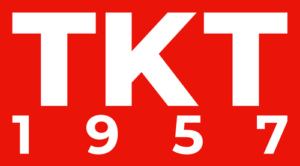
An interview with Mary Ann Seidler, the owner of First Light Broadcast and consultant for multiCAM Systems and Telos Alliance.
— What was the effect of the pandemic on multiCAM and their key customers?
For the US, I think it was more difficult because we weren’t as well-known. We had planned many things for last year to become more well-known in the US. It’s an ongoing challenge to figure out how to reach customers without going to trade shows and without going to see them. We’ve figured out different ways. The great thing about multiCAM is that they’ve got great products, so people are open to finding out more about them. You know what, if you really believe in something, you figure out a way to get the customer to listen.
— MultiCAM has a wide range of products. Can you summarize how your solutions help broadcasters to make programs safely, efficiently and help them save costs?
With our new product called PILOT, you can have one person control up to six cameras at one time, which saves money in personnel costs. Another new product, BACKDROP, allows you to create virtual production studios. So, you can create all these studios that are less expensive than if you had to physically build them, but it can still look innovative. That’s on the television side. It makes it easier and much less expensive.
On the radio side, our visual radio solution saves money because there doesn’t have to be a camera operator for anything. It can be completely automated, which is very helpful. If these radio stations are going to create visual radio, they must also think of themselves as competing against anyone else creating video. It’s got to look extremely professional, and our systems allow them to do that. They are easy to use, you don’t have to have multiple people using them. They’re also all in one, so you can plug them in, configure them, and they’re ready to go. Because of this, it saves people money in different ways.
— You also develop and present different innovative systems in robotics. In recent years, remote cameras have improved in performance and portability. What are the competitive advantages of your robotics systems? Why are your systems unique?
Our systems are very easy to use and control. They are probably also less expensive than a lot of the other ones, but extremely precise. Although the engineering inside is quite sophisticated, to control it with something like PILOT is quite easy. And they work with a lot of other equipment out there, so you don’t have to go out and buy everything from multiCAM (although I’d like you to!). Our huge advantage is that it works with a lot of different systems.
— What can we expect from the company in terms of product releases in the near future?
These are the products we have just released — we’ve been working on them for the past year. So, BACKDROP is extremely innovative, as is the entire SPIRIT line of products. We have six new products.

— Could you tell us about some of your latest wins?
We are doing some big projects, but unfortunately, we are in the middle of them so I can’t tell you too much. In Canada, we’ve just finished several different radio stations, and in the US, we just recently installed a television station. We also installed a very large conferencing system for a big client, but I won’t tell you who they are.
— What about the Russian and CIS markets? Are they important for you, and what clients do you have in these countries?
Russia is an extremely important market for us, both for multiCAM and for Telos. The CIS states are also very important. I was supposed to go to Georgia last summer! I had this all planned out, but it got canceled. I really dreamed about it, so hopefully next summer I will be able to go to Georgia and Azerbaijan.
— A major trend right now is remote production and Artificial Intelligence. What projects do you have in this sphere?
Most of our systems use artificial intelligence. One of the owners of the company has a master’s degree in robotics. So, we have done a lot of work with that, to make sure that when our cameras switch, they’re using the artificial intelligence we’ve written into it. This will be even more key in the future.



















